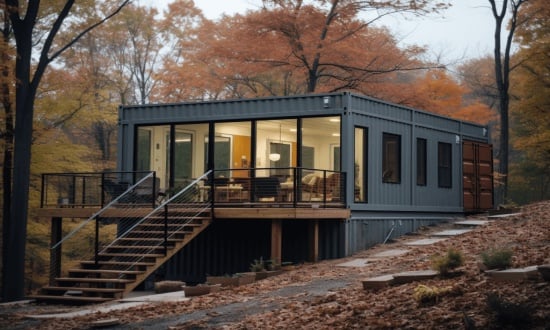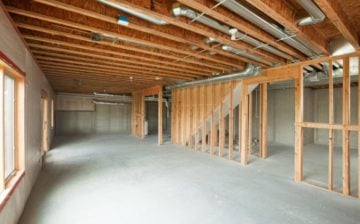Shipping container homes are growing in popularity all over the world. They’re affordable, quick to build, and offer a modern, industrial look that appeals to many. But like any home, they sometimes need a refresh, whether that means a full renovation or small changes to improve comfort or style.
There are many affordable shipping container options in New York, but it’s important to consider the structure before making changes. Unlike traditional homes, container homes are made of steel, so every cut, hole, or modification can impact the overall strength of the unit. So, how do you renovate without compromising safety?

1. Understand the Role of Container Structure
Before making any design plans, it’s key to understand how container homes hold themselves up. A standard shipping container is designed to carry heavy loads across oceans. Its structure is strongest at:
- The four corner posts
- The roof edges
- The floor frame
When you remove a wall or make a large cut such as adding a big window or door you take away some of that strength. That’s why it’s not as simple as grabbing a saw and cutting through the steel.
Think of the container like a hollow metal box. If you weaken one side too much without support, it can bend, sag, or even collapse over time.
2. Use Support Beams for Structural Changes
If you’re planning to open up a side of the container or connect two containers, you’ll likely need to add reinforcement.
Here are some common methods:
- Steel lintels over windows and doors
- Welded steel columns at the edges of new openings
- I-beams or H-beams for major cutouts (like open-plan areas)
These supports act like new bones for your home, replacing what you took away. It’s best to always work with a structural engineer when doing this. They can help plan the safest way to make changes without risking collapse.
3. Choose the Right Insulation and Interior Finish
Renovating a container home isn’t just about looks, it’s also about comfort. Insulation is extremely important because steel heats up quickly in the summer and becomes very cold in the winter.
Let’s have a look at the pros and cons of each insulations:
- Spray form: this type of insulation is great because they are airtight and space-saving. However they are more expensive and harder to DIY
- Rigid foam panels : are affordable and unlike spray form, they’re DIY- friendly. The downside is that they leave small air gaps which could make insulation less effective.
- Blanket insulation : these are easier to install and are very common, however they do take up more space.
Once the insulation is in, you can cover it with plywood, drywall, or wood panelling. Just make sure whatever you use doesn’t trap moisture against the steel, this can lead to rust.
4. Avoid Overloading the Roof
Many people love the idea of a rooftop deck or even a green roof. While this looks great and adds living space, it’s not always safe without reinforcement.
Container roofs are designed to carry weight at the corners.Placing a heavy load in the centre of the roof can cause it to sag or collapse over time.
If you plan to add a deck ,solar panels, garden, air conditioning units, then you’ll need to strengthen the roof from underneath, often with welded steel supports or load-bearing frames.
5. Choose Lightweight Materials Where Possible
Since containers are designed to move, they sit on foundations that may shift slightly. Using heavy materials like stone tiles or thick concrete can add too much weight and stress.
Instead, go for these materials:
- Vinyl or laminate flooring
- Plywood or MDF cabinets
- Lightweight metal or fibre cement panels
These options are easier on the structure and reduce the need for extra support.
6. Prevent Rust Before It Starts
Steel is strong, but it can rust if water gets in. During your renovation, make sure to:
- Seal all welds and cuts with rust-resistant primer
- Use marine-grade paint for exterior surfaces
- Add drainage around the foundation to keep water away
Also, keep an eye on areas where moisture builds up, like under windows, near sinks, and in bathrooms. Regular checks can help stop damage before it spreads.
7. Combine Form with Function
Renovating doesn’t mean going overboard with fancy features. Simple, smart upgrades can make your home feel fresh without affecting the structure.
Some ideas include:
- Floating shelves instead of heavy cabinets
- Pocket doors to save space
- LED strip lights for modern style with little power use
- Modular furniture that moves with you
8. Always Check Local Building Codes
In many areas, approvals must align with International Residential Code (IRC) and International Building Code (IBC) standards depending on whether the container is used as a permanent home. Local zoning laws and permit requirements vary significantly by city, county, and neighbourhood. You’ll likely need planning permission for structural modifications like cutting openings, installing plumbing or electrical systems, or adding extra units.
Final Thoughts
Renovating a shipping container home takes planning, care, and the right team. While it’s tempting to jump into design mode, don’t forget the frame that holds it all together.
Stick to smart upgrades, reinforce where needed, and always work with experts when cutting into steel. A little extra effort now will keep your home strong for years to come.
We hope you found this blog post on Renovate a Shipping Container Home With No Structure Changes, useful. Be sure to check out our post on Modified Shipping Containers: Unpacking a Global Trend for more great tips!
Have Experience in the Moving Industry? Want an Additional Income Stream? Work With All Around Moving!
The Work With Us program at All Around Moving allows you to run your own Moving Relocation Contractor company from anywhere in the United States. Click here to learn more.





